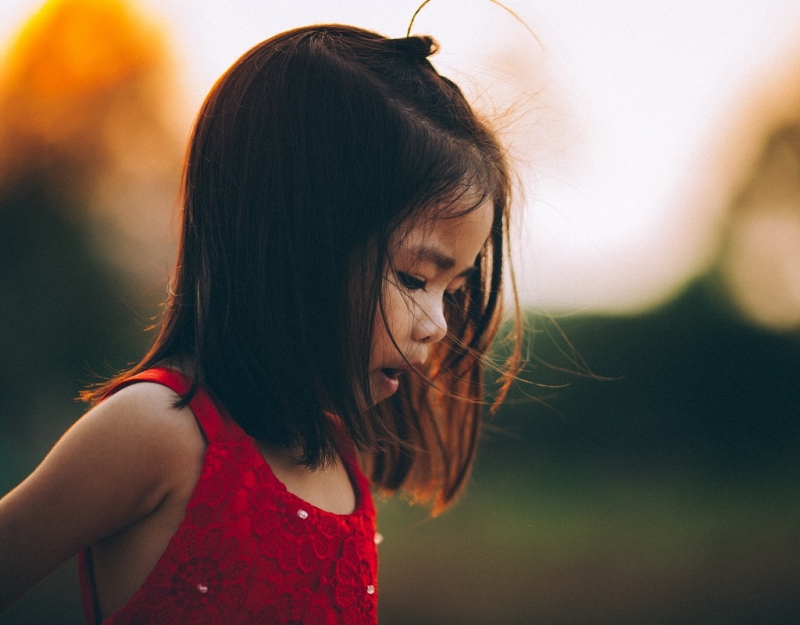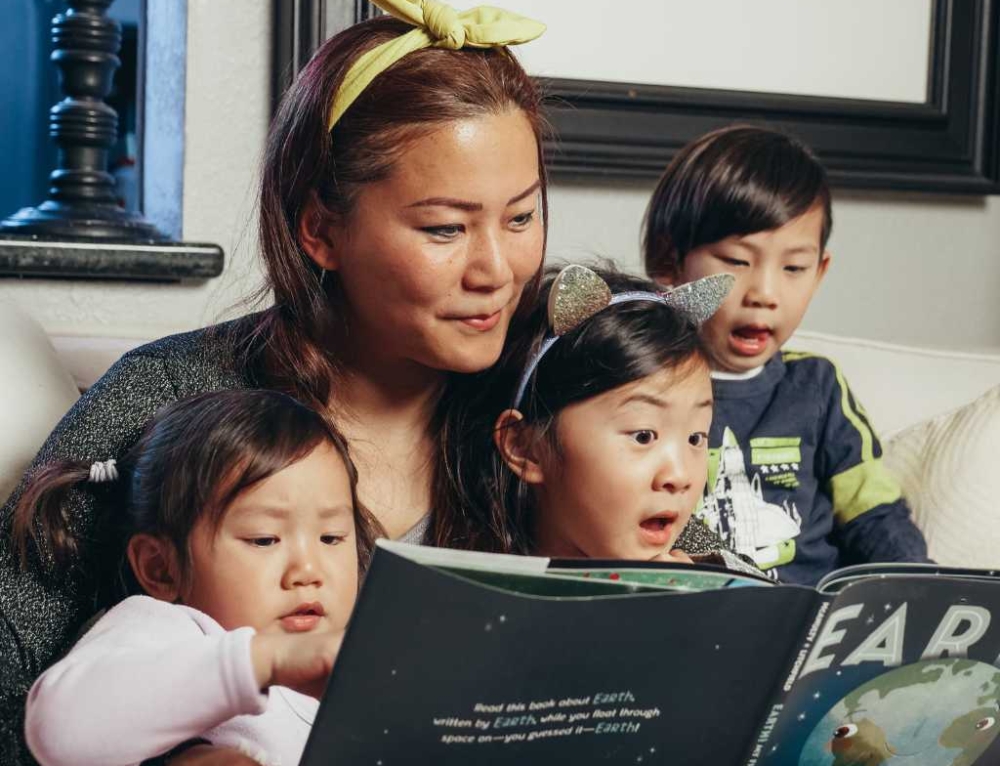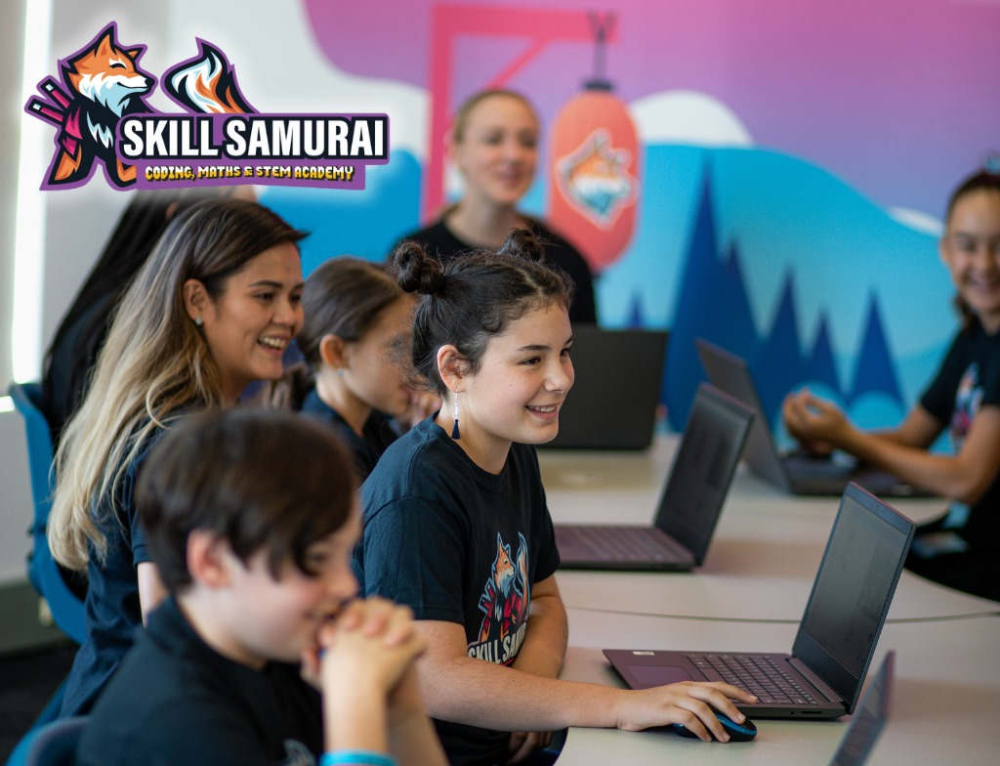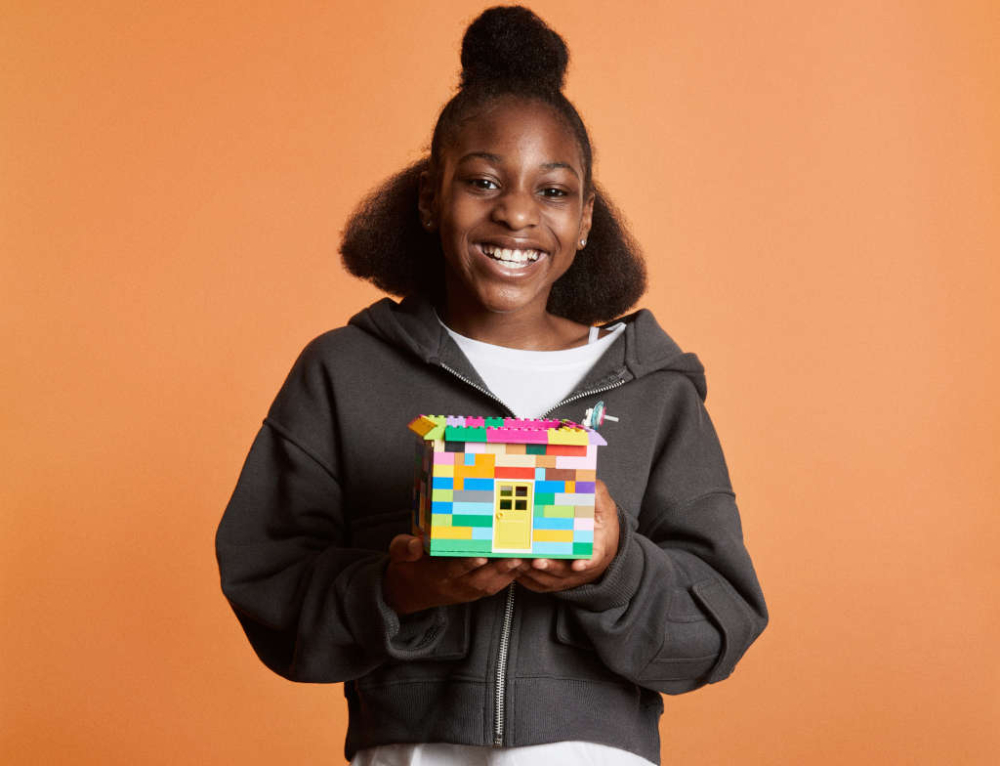What are head lice?
Head lice (Pediculosis capitis) are tiny, wingless insects that lay their eggs on hairs next to the scalp. Common among school-aged children, they are about 2-3.5mm long, with six legs, each with a claw at the end. Head lice feed on human blood and need the warmth of a human scalp to live. [1] Head lice cannot jump or fly, but they move quickly across the scalp from hair to hair with strong claws. This can make them difficult to see. [2]
Female lice lay about 6-8 eggs every day, close to the scalp. These eggs are called nits, and show on the scalp as small, whitish flecks. They are often seen behind the ears and towards the nape of the neck. [3] Head lice cannot live for long away from the human head. Lice found on carpets, bedding or soft toys are either old, sick or dead. (See, ‘How are head lice spread’ below)
Head lice have been around for thousands of years and anyone can get them. [4] In fact, they are one of the most commonly reported health complaint from parents and teachers. The NSW Health Nitbuster program found that, when sampled, more than 23 per cent of primary school aged children in New South Wales had head lice. [5]
How are head lice spread?
People get head lice from direct head-to-head contact with another person who has head lice. Head lice very rarely fall from the head, as they require blood to survive, feeding three to four times a day. Without blood, they will dehydrate in six hours in a dry climate and 24 hours in a humid climate. The further that eggs are from the scalp, the less likely they are to survive.
Head lice do not fly or jump from head to head. Instead, they crawl very fast, requiring head-to-head contact to move about. There is a low risk that they may be spread through sharing brushes and hats, but they are not likely to be spread through contact with bedding, furniture or carpets. [9]
Children of primary school age are the ones most likely to have head lice. But anyone who has had head-to-head contact with someone who has head lice could get them. Other family members are likely to get head lice if a child has them. Adults may have them without knowing that they do (they may not get any itching).
There is no truth to the myth that head lice only like clean hair. They are not selective.
Symptoms of head lice
There are two main signs of head lice:
- Intense itching of the scalp (though this is not always the case)
- It is the nit (egg), which is usually a visual sign that someone has head lice. [12]. These tiny yellow-white specks (less than 1mm long) will cling to the bottom of each hair and be difficult to remove (unlike dandruff, which will brush off). Eggs that are more than 10-15mm from the scalp (further along the hair) are dead or hatched. Hatched eggs stay stuck to the hair – they are white, flat and usually easy to see.[13] Lice on scalp and clothing may be difficult to see, unless there are a lot of them. [14]
How to find head lice
Half of the people who have head lice never scratch their heads, so itching is not a reliable sign. [15] Lice can also be difficult to spot. The easiest and most effective way to find head lice is outlined below.
Step 1 Comb hair conditioner on to dry, brushed (detangled) hair. This makes it difficult for lice to grip the hair or run around.
Step 2 Wipe the conditioner from the comb onto a paper towel or tissue.
Step 3 Look on the tissue and on the comb for lice and eggs.
Step 4 Repeat the combing for every part of the head at least four or five times.
Step 5 If the person has been treated recently and only hatched eggs are found, you may not have to treat them again since the eggs could be from the old infection.
Step 6 If lice or eggs are found, the person should be treated. [16]
How to treat head lice
Before you begin any treatment, make sure any heads you treat are infested with head lice – otherwise do not treat them.
The two usual treatment options for head lice are the ‘conditioner and comb’ method (outlined above, with more detail here) or the use of a specialist head lice treatment from a pharmacy. Head lice breathe through small openings along their abdomens called spiracles. Coating the hair with something thick and slimy causes these openings to close over and shuts down the louse’s breathing. A simple hair conditioner is recommended for this purpose. Although this application of thick and slimy substance does not kill the louse, it slows them down so that they can be easily caught by the head lice comb. You will need to use the conditioner and comb method every second day until no live lice have been found for 10 days. [18]
Read the directions on any product carefully. All products can cause reactions, so if you are unsure, check with your pharmacist or doctor.
Care should be taken when using these products:
- If you are pregnant or breastfeeding
- In children less than 12 months old
- In people who have allergies, open wounds on the scalp, or asthma.
In its 2007 review of head lice treatments, CHOICE magazine made the following observations:
“There are two types of treatments used to kill head lice and some eggs, based on their active ingredients.
Insecticides: Organophosphates (such as maldison or malathion), pyrethrins and synthetic pyrethroids (such as permethrin and bioallethrin).
Herbal: Various combinations of essential oils (commonly tea tree, melaleuca; eucalyptus; and lavender oils) and herbal extracts, with or without natural (as opposed to synthetic) pyrethrins, such as pyrethrum.
Herbal treatments are increasingly popular but, unlike insecticidal products, most haven’t been clinically tested or independently assessed for effectiveness or safety.
The conditioner and comb method is an effective way to detect and remove head lice and nits, but it’s time consuming.”
NSW Health advises against using natural products like tea tree oil as treatment for head lice. It also recommends that you do not use insecticides, methylated spirits or kerosene on your child’s head. [19]
Ensure that you wash the pillowslip from the child’s bed on hot cycle or place in clothes dryer. Head lice combs can be cleaned in water hotter than 60°C. As head lice only live for a short time off the head, no other extra cleaning is necessary. [20]
There is an array of different lice combs available. Combs with long, rounded, stainless steel teeth, positioned very close together, are the most effective. [21]
The Australian Medical Association has warned that treating head lice may become tougher as the lice become increasingly resistant to chemical treatments. But, according to the University of Sydney’s Department of Medical Entomology, “there is little evidence for the presence of resistance in Australia, and inadequate treatment and opportunities for reinfestation should first be considered as an explanation.”
A Yale paediatrician has also developed a non-toxic nit shampoo that makes the nits visible under ultraviolet lights, apparently making for easier, more effective removal. The shampoo contains a non-toxic fluorescent dye that binds to the outer shells of the nits, or eggs causing the nits to glow brightly on the hairshaft when viewed under ultraviolet light. This isn’t really a treatment, but a disclosing agent that helps parents find nits and lice so they can be easily and thoroughly removed. It is not currently available to purchase in Australasia.
In February 2014, scientists from Belgium published the results of a study which looked at the efficacy of different substances used in the removal of nits (eggs) from the hair shaft.
In the study, scientists gathered 605 hairs from six different children. Each hair had a single nit attached to it. Approximately 14 percent of these hairs contained a dead egg and the rest were empty. They found no significant difference in the effectiveness of nit-removal lotions and ordinary conditioners.[22]
Fact: The head louse (Pediculus humanus capitis) is an obligate ectoparasite of humans, a wingless insect that spends its entire life cycle on a human scalp and feeding exclusively on human blood.
Consequences of head lice
A head lice infection is not a life threatening health condition. Like similar health conditions, such as scabies and ringworm, it is a parent or guardian’s responsibility to treat and care for their child. Your doctor or pharmacist can help you decide the best course of treatment, particularly if you are concerned about allergies.
Fact: The female louse can lay several eggs per day at the base of the host hair shaft, with each egg being oval-shaped and about 0.8 mm in length. The nit hatches within 6 to 9 days.
How to prevent head lice
There is no product available that prevents head lice. However, tying long hair back and checking weekly for lice can help prevent the spread. [23] Using the conditioner and comb method, outlined in Finding Head lice, weekly is the best way to detect and treat head lice early.
Treating the whole family as a precaution contributes to head lice becoming resistant to the products used, and is not advised. [24]
Recurring head lice
Re-infection is the least likely reason for head lice returning soon after treatment. If eggs do not die or were not removed during the original treatment, the life cycle occurs all over again. To break this life cycle, you must re-treat (regardless of treatment method) seven days after the first treatment and continue with weekly checking. [25]
Head lice and responsibilities
While head lice do not post a serious health threat, and do not spread diseases in New Zealand, there is no doubt that an infestation can be annoying and inconvenient for families. For this reason, parents, schools and other institutions play a role in the preventing the problem spreading.
Parents are responsible for:
- Detecting head lice on their children
- Treating head lice
- Notifying the school, preschool, daycare centre and other communal gathering places (swimming lessons and other after-school activities, for example).
Schools (and other institutions) are responsible for:
- Contacting families to notify them if they notice their child has head lice, so that treatment can be arranged by the family
- Contacting other families within that community to notify them that head lice have been detected within the community so that they can check their own children and treat if necessary.
FOOTNOTES
- http://www.cyh.com/HealthTopics/HealthTopicDetails.aspx?p=114&…, retrieved on 25 February 2013
- http://www.mydr.com.au/skin-hair/head-lice, retrieved on 25 February 2013
- http://www.mydr.com.au/skin-hair/head-lice, retrieved on 25 February 2013
- http://www.ndhealth.gov/head-lice/publications/headlicebooklet.pd…, retrieved on 08 January 2014
- http://www.health.nsw.gov.au/environment/headlice/Pages/problem.a…, retrieved on 25 February 2013
- http://www.mirror.co.uk/news/world-news/worst-case-head-lice-ever…, retrieved on July 21, 2014
- http://www.patient.co.uk/health/wet-combing-treatment-for-head-li…, retrieved on July 21, 2014
- http://docs.health.vic.gov.au/docs/doc/68EE7A1FCE1254F4CA2579BA00…, retrieved on 08 January 2014
- http://docs.health.vic.gov.au/docs/doc/68EE7A1FCE1254F4CA2579BA00…, retrieved on 08 January 2014
- http://www.cyh.com/HealthTopics/HealthTopicDetails.aspx?p=114&…, retrieved on 25 February 2013
- http://docs.health.vic.gov.au/docs/doc/68EE7A1FCE1254F4CA2579BA00…, retrieved on 08 January 2014
- http://www.cyh.com/HealthTopics/HealthTopicDetails.aspx?p=114&…, retrieved on 25 February 2013
- http://www.cyh.com/HealthTopics/HealthTopicDetails.aspx?p=114&…, retrieved on 25 February 2013
- http://www.nlm.nih.gov/medlineplus/ency/article/000840.htm, retrieved on 25 February 2013
- http://docs.health.vic.gov.au/docs/doc/6CDC7A3F64632D2ACA2579BA00…, retrieved on 08 January 2014
- http://docs.health.vic.gov.au/docs/doc/088E58959DDC091ACA2579B800…, retrieved on 08 January 2014
- http://docs.health.vic.gov.au/docs/doc/088E58959DDC091ACA2579B800…, retrieved on 08 January 2014
- http://www.health.nsw.gov.au/environment/headlice/Pages/treatment…, retrieved on 08 January 2014
- http://www.health.nsw.gov.au/environment/headlice/Pages/treatment…, retrieved on 08 January 2014
- http://www.jcu.edu.au/phtmrs/abc/JCUPRD_047295.html#_Ectoparasite…, retrieved on 08 January 2014
- http://docs.health.vic.gov.au/docs/doc/6CDC7A3F64632D2ACA2579BA00…, retrieved on 08 January 2014
- http://www.sciencecodex.com/ordinary_conditioner_removes_head_lic…, retrieved on 26 February, 2014
- http://docs.health.vic.gov.au/docs/doc/6CDC7A3F64632D2ACA2579BA00…, retrieved on 08 January 2014
- http://www.health.nsw.gov.au/environment/headlice/Pages/treatment…, retrieved on 08 January 2014
- http://docs.health.vic.gov.au/docs/doc/68EE7A1FCE1254F4CA2579BA00…, retrieved on 08 January 2014







Leave A Comment
You must be logged in to post a comment.